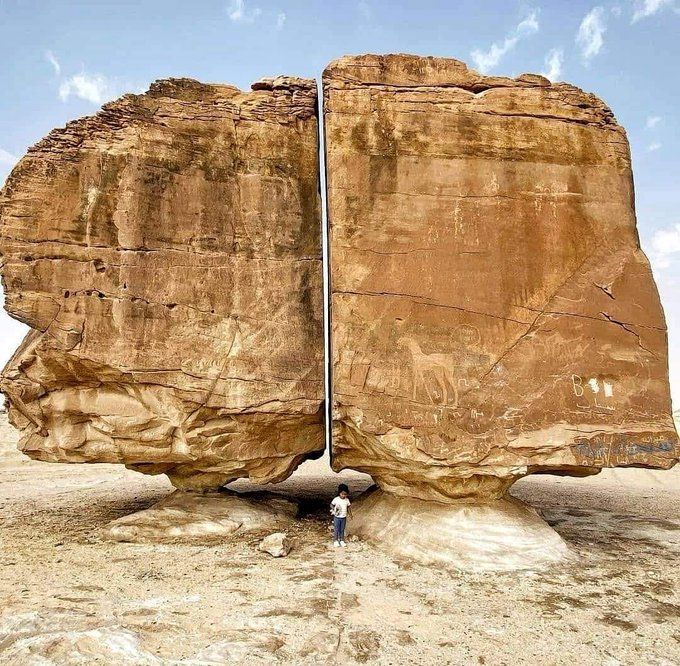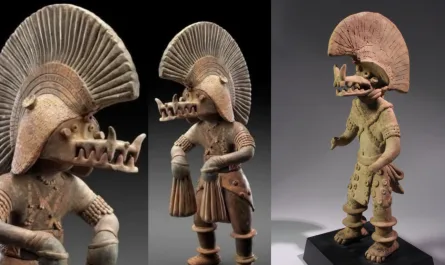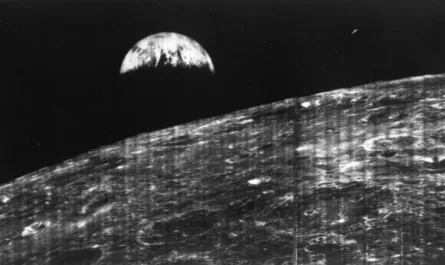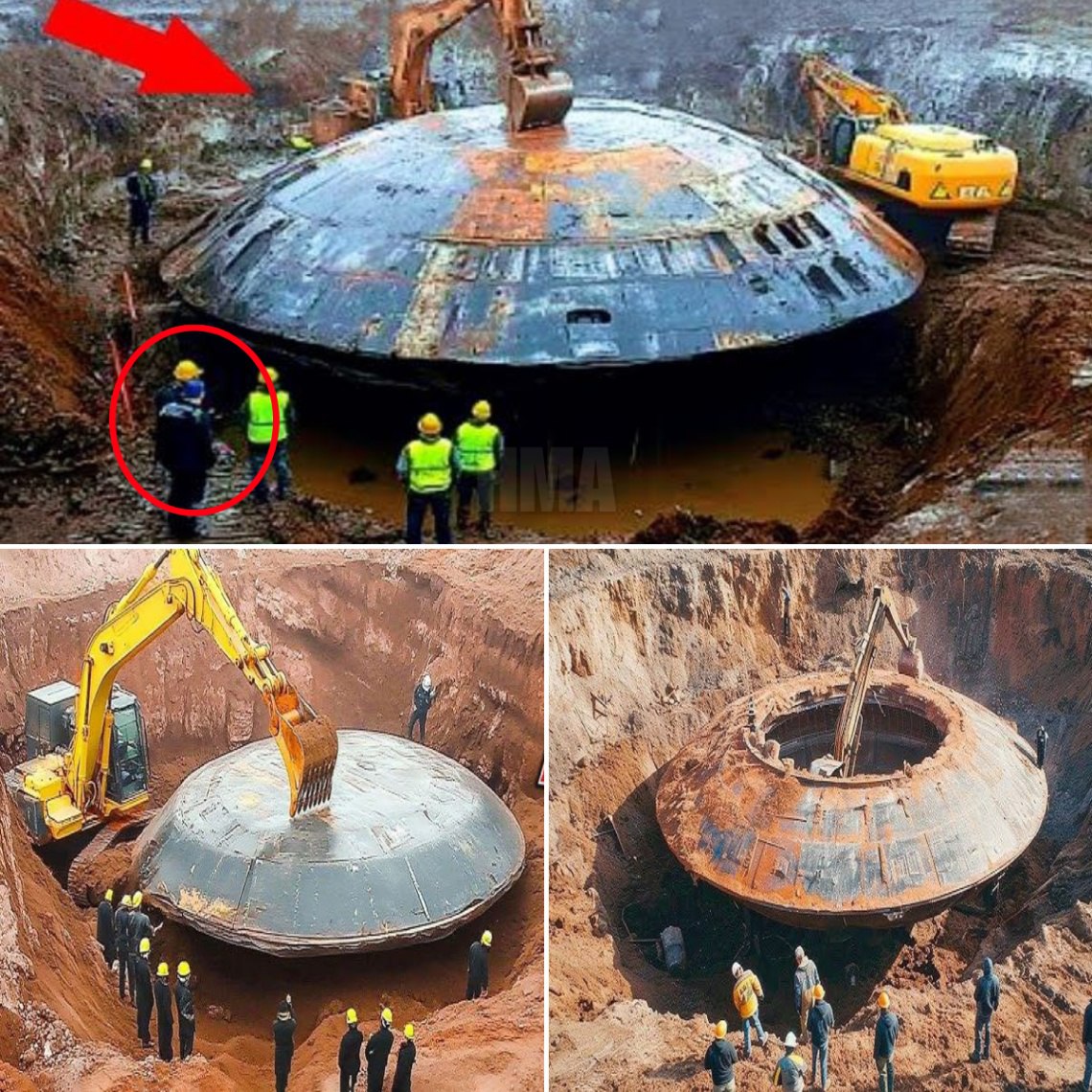The Al Naslaa Rock Formation, a massive, solid boulder that appears to have been split in half by an alien’s laser weapon, is a great illustration of how nature is a serious force to be reckoned with. Far from being a tale of extraterrestrial mischief (wonderful as that explanation would be), it is believed that the Al Naslaa Rock Formation was created entirely on Earth.

The two naturally occurring pedestals that the 6-meter (20-foot) high rocks are perched upon give the impression that they are practically levitating in perfect harmony with one another because they don’t lean into their small division and touch. Although it is difficult to believe the Al Naslaa Rock Development formed accidentally, the majority of scientific explanations for its formation focus on the natural weathering process.
The Al Naslaa Rock Formation Petroglyph
Petroglyphs like the Al Naslaa Rock Formation, which can be seen in Saudi Arabia’s Tayma Oasis, are among the most spectacular in the entire world. Images created by carving or engraving a rock’s surface are known as petroglyphs (as opposed to pictographs, painted onto rocks).
The surface of the Al Naslaa Rock Formation has images of humans, ibexes, and Arabian horses. Although the exact antiquity of the carvings on the stone is unknown, it is thought that the sandstone rocks date back thousands of years.
How Did The Al Naslaa Rock Formation Form?
The exact split through the middle of the Al Naslaa Rock Formation is the subject of various theories. One theory is that the boulder is situated along a fault line and that the split was initially produced when the ground shifting beneath the rocks caused it to split in half at a weak place.
This activity may have caused a fracture that later on could have served as a sort of wind tunnel for gusts carrying sand over the landscape. Over millions of years, the grains may have efficiently sanded down the irregular crack to produce a flawlessly smooth surface by passing through the opening.
The crack may also be a joint, which in geology refers to a break that occurs spontaneously in a rock without displacement. The Al Naslaa Rock Formation is a good example of an extraordinarily straight fracture that separates the rocks.
The Al Naslaa rock formation, found in Saudi Arabia, is one of Earth’s greatest mysteries. Two boulders, six meters (20 feet) high, stand atop their own pedestals, separated by a perfectly smooth crack. #ngss #ngsschat #nsta pic.twitter.com/UVXcWxyYGE
— Phenomena (@NGSSphenomena) March 22, 2022
Another theory is that the crack was created by freeze-thaw weathering when water entered a tiny crack in the nearby sandstone rocks during prehistoric times. The water may have subsequently frozen, expanding and enlarging the fissure as a result.
The dividing ice would have thawed and melted once the cool period was over, leaving behind a perfectly straight divide between the sandstone boulders.
Regarding the pedestals the divided rocks rest on, these are actually quite common in desert environments where, due to their shape, they are also sometimes referred to as mushroom rocks. They are typically the result of weathering, either from faster winds closer to the earth that erode the rock here more quickly, or from glacial activity, when one rock moves to balance atop another as a result of gradual glacial movement.
Could Humans Have Created The Al Naslaa Rock Formation?
The Al Naslaa Rock Formation is sandstone, which makes it not just susceptible to weathering but also to human intervention. The rock might have been split in half with some simple metal tools, but what could possibly motivate a person to attempt such a difficult task?
The strange rock carving might have been made by ancient civilizations as a landmark geographically, a place of religious significance, or an early work of art. The petroglyphs that are carved into its surface serve as a reminder that not all of what we do as people has a purpose other than self-expression.
Where Can I Find The Al Naslaa Rock Formation?
You may locate this natural wonder in Saudi Arabia’s Tayma Oasis, close to the Al Knanafah Wildlife Sanctuary, if you want to try your hand at unraveling the mystery of the Al Naslaa Rock Formation once and for all.





